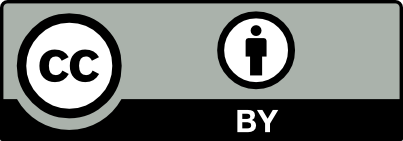A critical part of sustaining Open Educational Resources (OER) in higher education is recognizing the contributions by instructors who create and improve them as part of their professional work. In order to aid this effort, Driving OER Sustainability for Student Success (DOERS3) has developed an adaptable advisory model to help guide faculty as they attempt to include their OER work in their tenure and promotion portfolios. This model is in no way exhaustive and will likely be most useful as either a way for faculty to start thinking about how to best fit their OER work into their local T&P guidelines or as an OER adapted to those local concerns. Although this document in its current form was created with individual faculty in mind, we encourage T&P committees themselves to adapt and edit this document to use as guidance for their faculty.
We are aware that each T&P process is based on one’s local institution and its guidelines. Although individual institutions or departments may differ from this matrix in its categories, we have found that most variations of tenure and promotion guidelines can be adapted to teaching, research, and service.
While few institutions have recognized open educational practices as deliverables toward tenure and promotion, faculty, in documenting their OER work in their portfolios, should characterize their work using these terms to aid their colleagues in understanding their contribution.
For each contribution, we have suggested whether the contribution could apply to those three categories, and in some cases, we have marked multiple categories--which is most relevant will depend upon the context. In addition, the matrix includes examples of how faculty might think strategically about where their open education contributions would be valued most and how best to frame those contributions.
In 2023, the OER Contributions Matrix was translated into French by the Canadian Association of Research Libraries' Open Education Working Group task group on francophone OER, to encourage francophone and bilingual universities in Canada to start the conversation about making OER count for tenure and promotion.
We are aware that each T&P process is based on one’s local institution and its guidelines. Although individual institutions or departments may differ from this matrix in its categories, we have found that most variations of tenure and promotion guidelines can be adapted to teaching, research, and service.
While few institutions have recognized open educational practices as deliverables toward tenure and promotion, faculty, in documenting their OER work in their portfolios, should characterize their work using these terms to aid their colleagues in understanding their contribution.
For each contribution, we have suggested whether the contribution could apply to those three categories, and in some cases, we have marked multiple categories--which is most relevant will depend upon the context. In addition, the matrix includes examples of how faculty might think strategically about where their open education contributions would be valued most and how best to frame those contributions.
In 2023, the OER Contributions Matrix was translated into French by the Canadian Association of Research Libraries' Open Education Working Group task group on francophone OER, to encourage francophone and bilingual universities in Canada to start the conversation about making OER count for tenure and promotion.
Your browser does not support viewing this document. Click here to download the document.
The primary authors of this document are Amanda Coolidge, Andrew McKinney, and Deepak Shenoy. This document is licensed by DOERS3 under a Creative Commons Attribution 4.0 International Public License.
Download Copies of the OER Contributions Matrix
|
|

